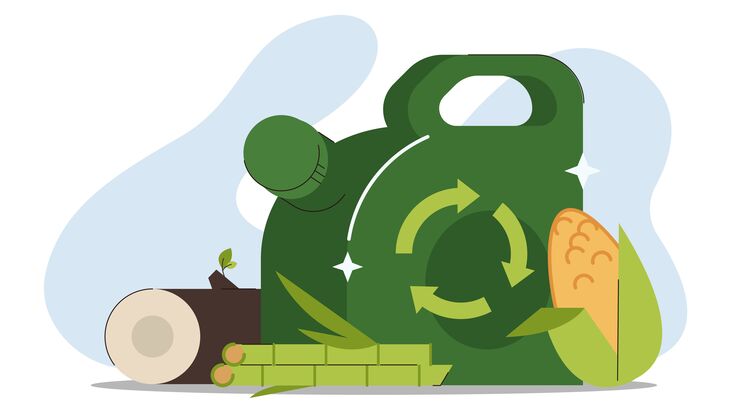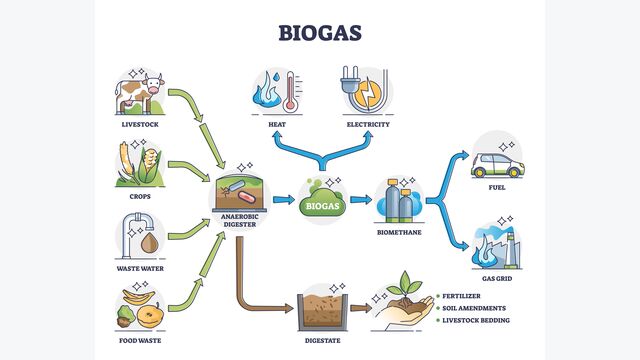Interview : “Biomethane is the joker amongst the renewable energies”

What are the incentives that drive biogas generators to consider upgrading their biogas?
Many biogas plants are losing the tariffs that were granted during the different stages of the German Renewable Energy Sources Act (Erneuerbare-Energien-Gesetz, EEG) as part of tender bids for electricity and heat supply (CHP).
What are the intended uses of biogas vs biomethane?
Raw biogas requires only minor cleaning procedures (desulphurisation, drying) in order to be applied in CHP units for power and heat generation. Upgrading to biomethane allows further use in the gas grid and as fuel in compressed or liquefied form (bioCNG, bioLNG) and still allows usage in gas engines (CHPs).
What are the advantages of biomethane compared to natural gas? Is it compatible?
The advantage of biomethane is definitely its GHG emissions neutrality if not avoidance. For substrates like manure, the GHG emission balance is actually negative as emissions from just dumping it onto agricultural soils release methane and other greenhouse gases are avoided. The specific GHG emission values for substrates, gases and production chains are defined in the Renewable Energy Directive (RED II). Biomethane is absolutely compatible with natural gas and can be admixed (or even completely replace natural gas) in any ratio. Depending on a specific gas grid section, a distinction is made between gas grades L (low) and H (high). Natural gas H has a higher methane content, while gas L contains larger amounts of nitrogen and carbon dioxide. This is verified during methanation at a given feed-in point by the relevant certifications and approvals.

How many biomethane plants are currently in operation in Europe and worldwide? How many are planned?
Specific information and figures can be obtained from the European Biogas Association. The EBA Statistical Report for 2020 (published in 2021) states that there were 725 active biomethane-producing plants in Europe in 2019, with an increase of 95 additional plants, the year with the biggest increase to date.
What are the main upgrading technologies and what are their advantages and disadvantages?
Specific information and figures can be obtained from the European Biogas Association. Europe-wide, the main upgrading technology is membrane separation, followed by water and chemical scrubbing, pressure swing adsorption and physical scrubbing, with cryogenic separation accounting for a small proportion. The advantage of membrane separation is that it is a mature and affordable technology. Cryogenic separation allows a very clean separation, and the remaining CO2 can be directly used in the form of dry ice, for example in the food and beverage industries. But the power consumption is very high.
What is the challenge in determining the best gas upgrading technology?
The best upgrading technology for a specific project and intended use depends on many factors, which need to be individually yet holistically assessed. Besides the type of substrates and further use (bioCNG/LNG require further upgrading as for grid injection only), the intended volume and feedstock availability play a crucial role. As most technologies require heat/cold and electricity, the availability of heat utilisation is also important.
How do new European standard requirements for gas distributed through the existing gas grids affect the options for distributing upgraded biogas?
From a technical point of view, there are no major issues as explained above, since specific technical standards for grid injection exist in most EU member states.
The major issues within Europe are: the transfer of ‘sustainable’ biomethane from one country to another: as legislation is at differing stages of implementation of GHG emission tracking, such gases may lose their certified GHG (reduction) potential. This certification has just started to become operational and is still being revised and interpreted.
The connection to a gas grid is complicated in terms of approvals and costs. In some legislation, there are limitations on the volumes produced by a specific plant, as well as restrictions during tender bids for electricity supply.
Want to know more about biomethane and its role in a circular economy - read here!
With the current attempts worldwide to become less reliant on fossil fuels – especially natural gas from Russia – how important is biogas upgrading?
Biomethane is 100% compatible and exchangeable with ‘natural gas’ (i.e. fossil gas), especially from biogenic wastes, rather than from energy crops specifically grown for biomethane production. It is certainly the best option for replacing fossil gas completely, in combination with all other renewable forms of energy. The potential of synthetic methanation of (biogenic) hydrogen must also be considered. The European Union set a target to produce 35 billion cubic metres of biomethane by 2030 as part of its REPowerEU plan (of 8 March 2022)with the aim of becoming less reliant on Russian gas. The European Biogas Association published a breakdown on their website, showing what this could mean in terms of additional installations and investments- (see here)
Do you see the need to implement new policies to push forward the installation of more biogas upgrading systems?
Personally, I see more of a need to properly implement EU policies, targets, laws and ordinances, broken down and made achievable for the final producer and supplier of biomethane. There are a lot of ordinances and revisions on the way, but nationwide and even regional execution lacks implementability in terms of bureaucracy.
How do you see the future of biogas upgrading?
Biomethane is the joker amongst the renewable energies and interacts with them perfectly. It serves as a source for electricity, heat/cold and as a fuel. In combination with solar and wind energy, further potential for natural gas substitution can be leveraged. The goal should be to make it a substitute for fossil gas worldwide. Biomethane production and usage can even take in greenhouse gas emissions. The further use of the remaining CO2 in industry, food and beverages, etc. is another important advantage and helps to reduce or even utilise GHG emissions.
About Dirk Bonse:
Since July 2021, Dirk Bonse has held the position of Head of Department for Renewable Gases at the German Biogas Association. His responsibilities include coordinating work in the areas of biomethane and of biogenic hydrogen for use in the electricity, heat and transport sectors, and responding to the needs of and advising biogas plant operators and companies by creating concepts to improve the industry’s framework conditions related to the utilisation of biomethane and biogenic hydrogen.
Dirk has been associated with the industry for more than ten years: as a former sales and project manager as well as an independent consultant, renewable gases are his specialty. The material or energetic use of digestates, for example, is another of his areas of expertise, alongside material utilisation of such gases, including CO2 capture and utilisation.


